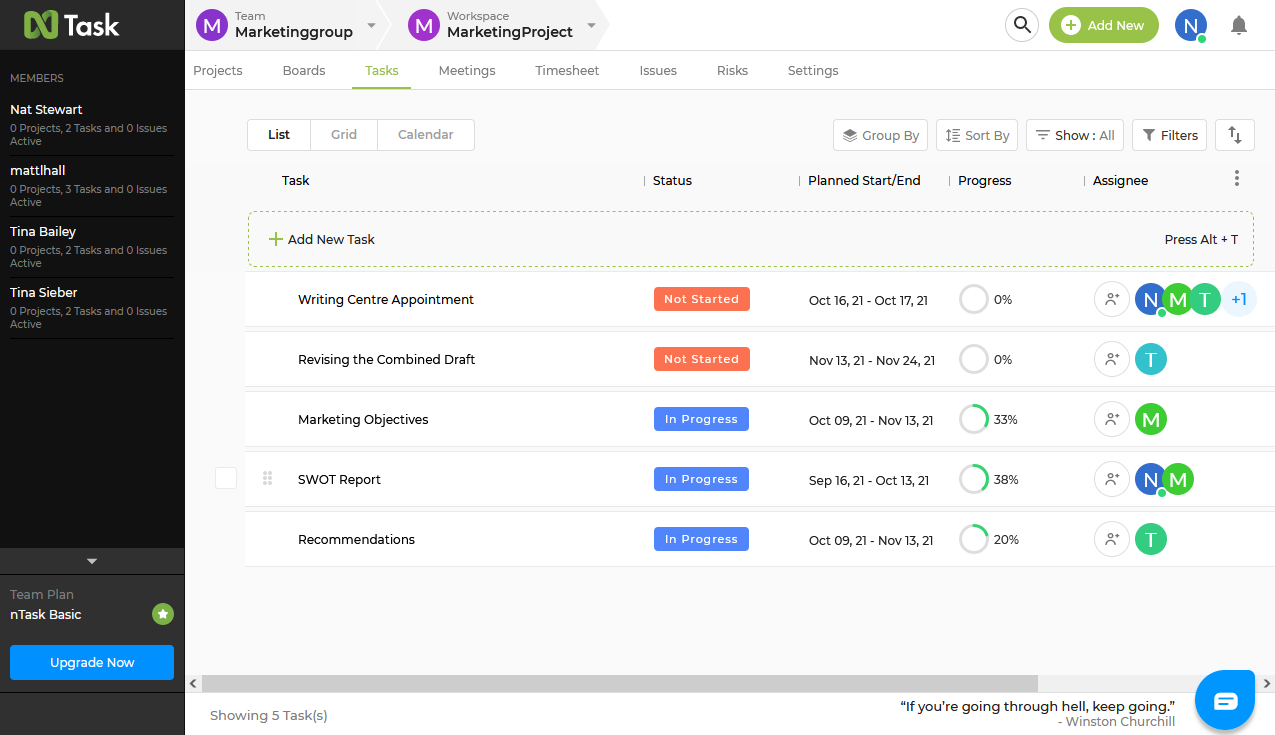Group projects are a dreaded but inevitable part of college and university education. Unfair task division and resentment run rampant. But it doesn't have to be that way!
If your group runs smoothly, a group project can be a good lesson in project management. Here are five tips to make your group projects easier.
1. Schedule Everything on the First Meeting
It's best to start with a clear timeline, even if you move some dates later. Create deadlines for outlines, first drafts, and revised drafts. It's also a good idea to have a meeting on deadline days, to make sure everyone is ready to move on to the next step.
This also makes it easier to divide responsibilities. Your group must finish some parts before others. Knowing the timeline lets you assign tasks according to when people are free. For instance, someone busy at the end of the semester but free at the beginning could cover setup tasks.
2. Use a Project Planner App
Most times, students in a group project just create a group chat. This allows communication, but not much else, and only if everyone checks it often. The project will go much better if you use a project management app. Choose one that can contain comment threads, drafts, meeting schedules, class notes, and progress all in one place!
We recommend nTask. It has many useful features. It's also free, though you can get more features with a subscription.
nTask's tutorial takes less than five minutes to complete, and you can add team members by email. It's also a browser-based application—no download required! You can also get it for iOS and Android.
To make it even easier, familiarize yourself with nTask before the first meeting. Then, you can set up the project during it and simply invite your group mates to join.
You can add tasks and deadlines to the project as they're decided. Then all your group mates have to do is click the invitation links.
Setting Up a Group Project in nTask
First, you'll need to create a Team! Name it after your class or project. Once you have a team, the next step is to make a Workspace. Give it a similar name. Almost done! Now make a Task for each person's part of the project, and break each task into steps using the Checklist.
You can also attach documents, related meetings, deadlines, and more in the Task view. Switch over to Meetings view to enter meetings. Meetings in nTask provide space for objectives, notes, and more. These help guide the meeting, and help absent members catch up.
By setting up the project basics ahead of time, you make it much easier for your group mates to move in.
Download: nTask for Android | iOS (Free, subscriptions available)
3. Create a Group Stylesheet
It's good to have a cohesive style between different members' sections. This is especially important for written projects. Often, it may even be part of the grade!
To make a stylesheet, your group must agree on basic things like which POV to write from. If you get a choice, you should also pick a citation style to use. You don't need to make all these decisions right away, you can add things as they come up.
We recommend making your stylesheet as a document that you upload to your nTask Project. That way, all members can view it and add to it as-needed.
4. Embrace the Virtual Environment
If your group project is happening through distance learning, this might be your default! But even for in-person students, virtual meetings offer many advantages. For one, group members can join the meeting from anywhere, since travel isn't an issue.
Another benefit of using virtual meeting software like Zoom is that you can record the meeting. That way, if someone can't make it, they can simply review the recording. This is better than notes and easier than rescheduling.
It's important to be inclusive while running a virtual meeting. Choose a method that ensures everyone has a chance to speak up. Also, if someone doesn't want to use video chat because of anxiety or discomfort, allow them to use voice only.
5. Create a Positive Group Culture
A lot of group projects fall apart because of real or perceived hostility. Hardworking students may presume they'll end up doing all the work and become resentful. Overloaded students may assume that they can't meet the group's standards, and give up.
These communication breakdowns can spell death for even the best-organized project. The best way to avoid them is to set up a positive culture from the very beginning. You can do this by discussing the following points with your group.
- Division of Labor. Your group members will have varying amounts of time and energy to dedicate to this project. It's usually best to divide labor accordingly.
- Lateness. It's best to decide early on how the group will respond to a missed deadline. Make a plan for helping the late person get back on track. After all, anger won't turn the clock back.
- Quality Goals. The sad truth is, an “A+” is not possible every time. Decide what is achievable based on everyone's capacity. That way, no one struggles against unreasonable expectations.
Your group may want to rely on old habits. For example, dividing labor equally. They might want to make a promise not to miss deadlines, instead of planning for the possibility.
But these habits often spell disaster. People have different capacities, and mistakes are bound to happen. Accommodation and planning are key to success.
Group Projects Can Work
When group projects fall apart, it's often because of poor communication. But with the right framework, you can address problems earlier or avoid them entirely.
In the best case, it can even give you work experience in project management!







